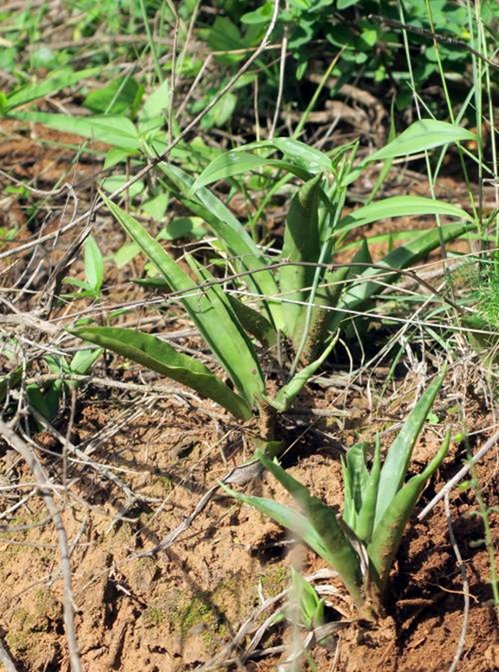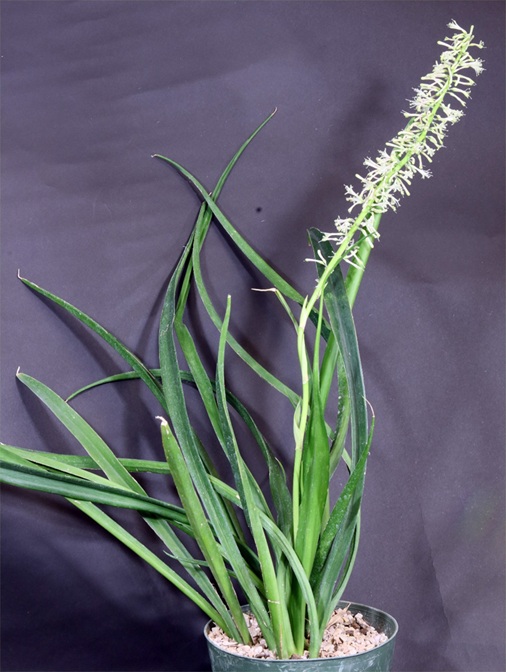| Protologue: |
Bulletin of Miscellaneous Information, Kew 5: 231 (1915). |
| Subgenus: |
Sansevieria |
| Group: |
Sansevieria parva |
| Etymology: |
This species is named for Captain Hugh B. Dooner, an Australian safari hunter in Kenya. |
| Distribution: |
Kenya and Uganda, likely west of the Rift Valley and its eastern escarpment. |
| Brief Description: |
This acaulescent species spreads with rhizomes or stolons to form large clumps. On older plants, a stem 5 cm long could be present, concealed by leaf bases. Up to 29 lanceolate leaves are present in a rosette; these leaves are erect or ascending, recurving-spreading and are 10-43 cm long by 1.5-3 cm wide with a gradually narrowing base. The leaf color is dark green with a slightly paler lower face slightly paler; both faces are smooth with faint and irregular pale green transverse bands and a soft tip. The inflorescence is 30-38 cm tall and simple with 2 - 3 flowers per cluster. |
| Similar Species: |
It is unclear whether Sansevieria parva and S. dooneri are separate species, or whether a combination is needed. In cultivation, Sansevieria dooneri is a much larger species with dull light green leaves, and its leaves tend to be a little floppy. Comparing plants from near the type localities, S. dooneri has more or less plain green leaves, whereas S. parva has some mottling on the leaves. More field work is needed to see if this is consistent across populations. No other species in the genus can be confused with these two species other than S. caespitosa, which currently is not considered to be a valid species. |
| |
| |

Sansevieria dooneri at its type locality near the base of the Eastern Escarpment of the Rift Valley west of Nairobi, Kenya.
|
| |

Sansevieria dooneri flowering in cultivation.
|

